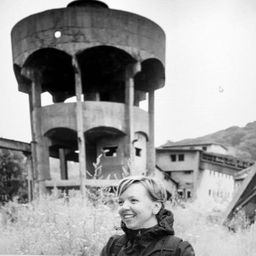Photography as a tool for industrial heritage research, acknowledge, and social engagement: The case study of Anina (Romania)
My Session Status
What:
Paper
When:
2:00 PM, Wednesday 31 Aug 2022
(20 minutes)
Where:
UQAM, pavillon J.-A. De Sève (DS)
- DS-1420
In the last 10 – 15 years, a variety of bottom-up initiatives have emerged in Romania as a result of civic action, focusing on the safeguarding and enhancement of the cultural heritage despite the lack of legal support and an appropriate national strategy in the field. Such an initiative is also the cultural project “Anina, Mine of Ideas” (2014 – 2018), developed in the former coal-mining town of Anina, south – west Romania. For more than 200 years, spanning from 1773 to 2007, the industry has shaped Anina’s territory and community. Forty-nine objectives are now officially acknowledged for their patrimonial value and included in the List of Historic Monuments and Sites (1992); conversely, an overall strategy for their maintenance and preservation is still lacking.
Starting from 2014, various actors of the civic society in collaboration with local administration organised the cultural project “Anina, Mine of Ideas”. For the first time in Romanian preservation setting, the industrial landscape was approached as a living organism and was decoded in its tangible and intangible manifestations, through an international and interdisciplinary contribution. Throughout the project, the photographic recording of the industrial landscape played an important role, giving space for experimentation in matter of ‘objective’ and ‘subjective’ research, interpretation and representation of the industrial legacy from a patrimonial perspective, while analyzing the impact of technological upgrade on the overall approach. The difference between an ‘objective’ and ‘subjective’ photographic representation is based on the underlined difference between what is being photographed and how is being photographed. If the first option brings into debate various digital
photographic applications in the field of architectural preservation, the second one reveals the individual and personal perception of what industrial heritage represents. Furthermore, throughout the project’s activities, photography became a main communication and engagement tool with the local community, breaking the barriers imposed by the rigor of scientific discourse. It allowed specialists to interact directly with local community and, moreover, to open a constructive dialogue on issues such as preservation, maintenance, and monitoring of the industrial legacy, while generating potential scenarios on territorial and socio-cultural revitalisation through the enhancement of local cultural heritage.
The paper will illustrate the various photographic methods used and applied in Anina, together with the various cultural activities dedicated to the local community in which photography played a major role. It will be analyzed the manner in which photography facilitated the social and cultural engagement with the scientific discourse, in a difficult post-industrial setting in which issues such as poverty, social inequality, and isolation dominate the local discourses and narratives.
